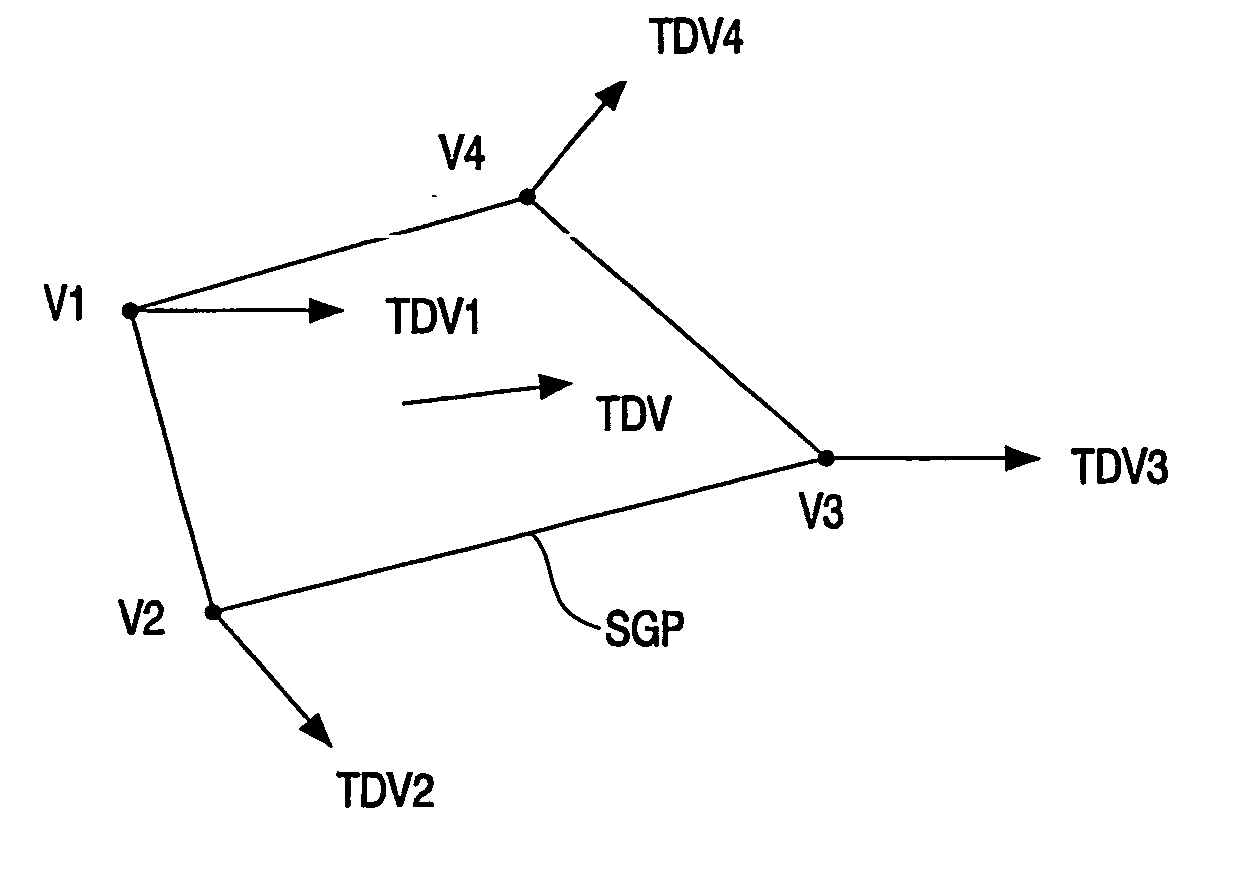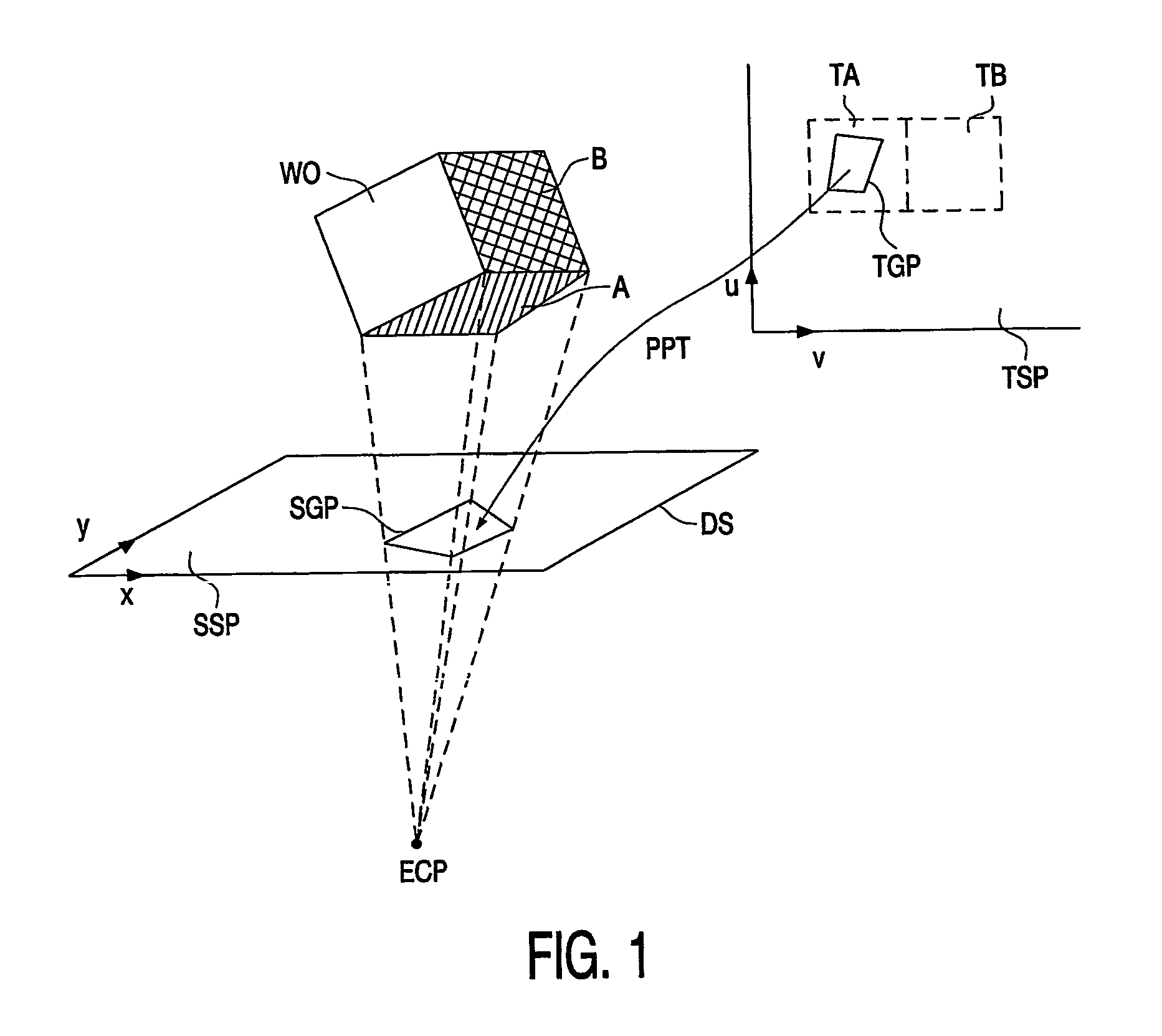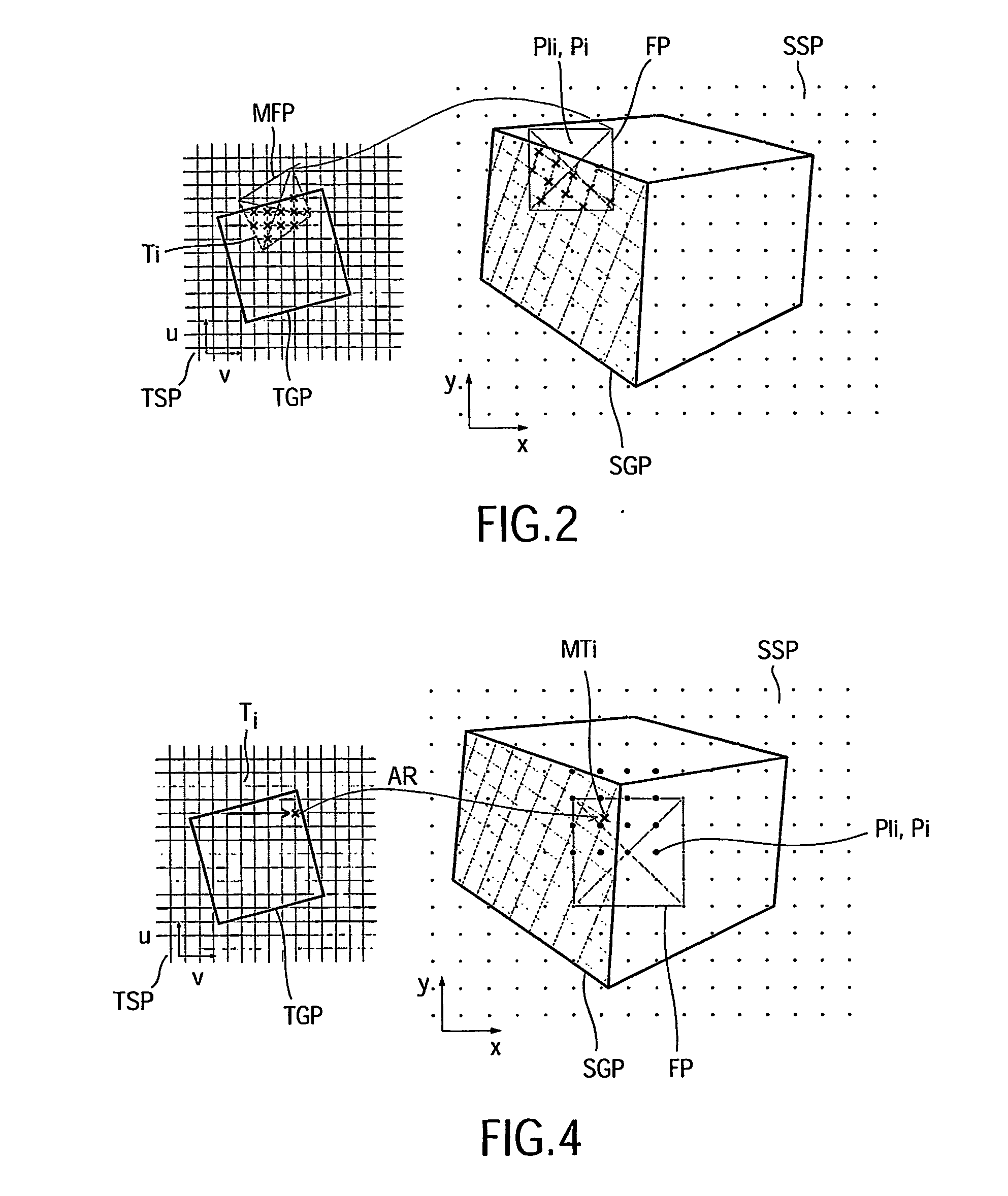Generation of motion blur
a motion blur and motion technology, applied in the field of motion blur generation, can solve the problems of increasing frame rate, visual artifacts, and small frame to frame displacement, and achieve the effect of less aliasing, acceptable motion blur, and acceptable motion blur
- Summary
- Abstract
- Description
- Claims
- Application Information
AI Technical Summary
Benefits of technology
Problems solved by technology
Method used
Image
Examples
Embodiment Construction
[0050]FIG. 1 elucidates a display of a real world 3D object on a display screen. A real world object WO, which may be a three-dimensional object such as the cube shown, is projected on a two-dimensional display screen DS. The three-dimensional object WO has a surface structure or texture which defines the appearance of the three-dimensional object WO. In FIG. 1 the polygon A has a texture TA and the polygon B has a texture TB. The polygons A and B are with a more general term also referred to as the real world graphics primitives.
[0051] The projection of the real world object WO is obtained by defining an eye or camera position ECP with respect to the screen DS. In FIG. 1 is shown how the polygon SGP corresponding to the polygon A is projected on the screen DS. The polygon SGP in the screen space SSP defined by the coordinates X and Y is also referred to as a graphics primitive instead of the graphics primitive in the screen space. Thus, with graphics primitive is indicated the pol...
PUM
 Login to View More
Login to View More Abstract
Description
Claims
Application Information
 Login to View More
Login to View More - R&D
- Intellectual Property
- Life Sciences
- Materials
- Tech Scout
- Unparalleled Data Quality
- Higher Quality Content
- 60% Fewer Hallucinations
Browse by: Latest US Patents, China's latest patents, Technical Efficacy Thesaurus, Application Domain, Technology Topic, Popular Technical Reports.
© 2025 PatSnap. All rights reserved.Legal|Privacy policy|Modern Slavery Act Transparency Statement|Sitemap|About US| Contact US: help@patsnap.com



